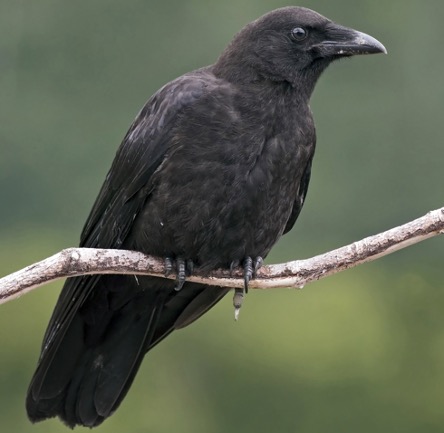
Figure 1: A Northwestern Crow near Whittier, Alaska.
Corvids, along with parrots, have experimentally demonstrated cognition comparable to that of great apes—a family of primates including gorillas, chimpanzees, and humans (Olkowicz et al., 2016).
When asked to name the smartest animal, most people would name an elephant, a dolphin, a primate, or – most likely – a human. These animals all share two particular features: large brains and, specifically, neocortices, the part of the brain associated with higher brain function; however, increasingly the evidence has shown that these characteristics, while contributing to advanced cognition, are not the sole determining factors to animal intelligence.
A concrete example of an intelligent small-brained, neocortex-less class of animal is birds, with parrots and corvids standing out as particularly cognitively advanced. They innovate, using manufactured tools to reach and access food, storing different food types in different locations at different times—all without forgetting any of it. Birds with a past experience of having their food caches stolen learn to re-hide their food when no one is looking, indicating some understanding of others’ behaviors and thinking. They process visual information at a high level as well as distinguish images based on differences in color and tone, the category of subjects they portray, and comparisons within a small set. Certain species demonstrate rapid learning and problem-solving abilities. Most notably, corvids and parrots outperform mammals with neocortices in certain tests of intelligence (Emery, 2006).
In a recent article written for Scientific American, Bret Statka reviews an experiment performed at the University of Tübingen in Germany. In the study, two carrion crows were presented a seemingly simple task broken up into two phases. The first phase either showed the bird a gray square or nothing at all, followed by either a blue or red square during the second phase 2.5 seconds later. To respond correctly, the bird moved its head after a gray-red or a nothing-blue sequence and remained still after a gray-blue or a nothing-red sequence. Given the birds’ performance and recorded evidence of select neurons’ stimulation exclusively between seeing a gray square and a colored one, the team suggests that “birds have some ability for…subjective experiences in which they recall sensory experiences,” an ability previously believed to be a primate-exclusive (Stetka, 2020).
One reason for the past tendency to restrict expectations of complex cognitive functions to primates and a few select mammals is size. Although differences in brain mass amongst a single species — humans, for instance — do not correlate to intelligence, when it comes to species “small brains are expected to have a lower information-processing capacity.” Birds, being smaller than elephants and gorillas and the like, also have significantly smaller brains. Regardless, they do not seem to follow the trend of reduced brain size equating to reduced cognitive capabilities, and neuroscientific research has provided an explanation (Olkowicz et al., 2016).
In short, bird brains are denser. The total number of neurons found within each unit of mass in the brain is significantly higher in birds than in primates, rodents, and artiodactyla — even-toed hoofed mammals — with songbirds having twice as many neurons as a primate or rodent at the same brain size (Olkowicz et al., 2016). Additionally, the distribution of neurons differs, with birds possessing particularly high concentration of neurons in their telencephalons—the most recently evolved brain region (Olkowicz et al., 2016). Regardless, one might wonder even a dense telencephalon could match the performance of a neocortex, an even more highly developed region emerging from the telencephalon. The answer lies in the structure of the neocortex.
The mammalian neocortex is laminar, meaning that it is composed of columns of neurons in six total layers. Despite their columnar structure, the neurons communicate with one another in both the vertical and horizontal directions (Stetka, 2020). The significance of this particular set-up is not perfectly understood, but it contributes to the advanced intelligence observed in animals with highly developed neocortices. The bird brain lacks a neocortex, so the closest useful comparison of structure emerges from examination of their telencephalons. A bird’s telencephalon was initially thought to be composed of neuronal clumps. However, as techniques for examining brains grew more sophisticated, scientists have been able to analyze the bird telencephalon in greater detail, with particular focus on a region known as the dorsal ventricular ridge (DVR) and a single neuron clump called the wulst. There, in the neocortex-less brains of pigeons and owls, they found a familiar structure: layers of columnar neurons connected not only vertically, but also horizontally (Stetka, 2020).
The results clearly indicate that the “laminar and columnar properties of the neocortex are not unique to mammals,” and, given the core tenet of biology that structure informs function, it follows that the cognitive capabilities which arise from a primate neocortex can also emerge through the mechanism of the similarly-built DVR in birds (Karten, Wang, and Brzozowska-Prechtl, 2010). The capabilities of the two structures are, in the words of Vanderbilt University neuroscientist Suzana Herculano-Houzel, “equivalent.”4 Intelligence does not emerge from a singular format; the right kind of mechanism, formatted correctly, capable of the proper functions, can always be the source of advanced cognition.
References
Emery N. J. (2006). Cognitive ornithology: the evolution of avian intelligence. Philosophical transactions of the Royal Society of London. Series B, Biological sciences, 361(1465), 23–43. https://doi.org/10.1098/rstb.2005.1736
Karten, H. J., Wang, J., & Brzozowska-Prechtl, A. (2010). Laminar and columnar auditory cortex in avian brain. Proceedings of the National Academy of Sciences, 107(28), 12676– https://doi.org/10.1073/pnas.1006645107
Olkowicz, S., Kocourek, M., Lučan, R. K., Porteš, M., Fitch, W. T., Herculano-Houzel, S., & Němec, P. (2016). Birds have primate-like numbers of neurons in the forebrain. Proceedings of the National Academy of Sciences, 113(26), 7255– https://doi.org/10.1073/pnas.1517131113
Stetka, B. (2020, September 24). Bird Brains Are Far More Humanlike Than Once Thought. Scientific American. https://www.scientificamerican.com/article/bird-brains-are-far-more-humanlike-than-once-thought/
Related Posts
Bio-renewable Alternative to Polyethylene Terephthalate (PET)
The pliability and low-cost of synthetic thermoplastics have rendered them...
Read MoreWhat Drives Musical Pleasure? Scientists Now Have the Name
Figure 1: Why is music so rewarding for the human...
Read More“Living” Droplets Can Produce Renewable Hydrogen
Figure 1: A microscopic image of Chlorella vulgaris, a species...
Read MoreRachel Matthew



